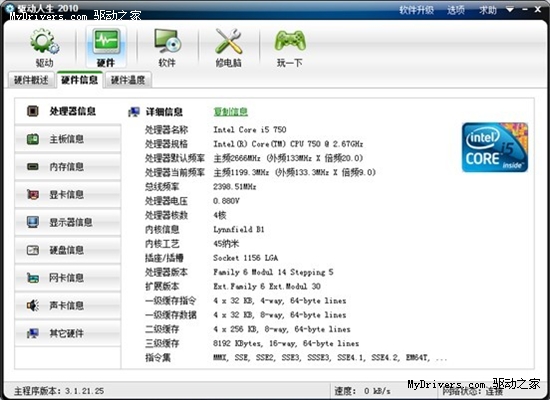本文实例讲述了JavaScript中的类与实例实现方法。分享给大家供大家参考。具体如下:
JavaScript 中没有父类, 子类的概念, 也没有class 和 instance 的概念, 全靠 prototype chain来实现继承. 当查找一个对象的属性时, JavaScript 会向上遍历 prototype chain, 直到找到对应的属性为止. 有几种方法, 可以使得 JavaScript 模拟出 class 和 instance 的概念.
1. 直接使用构造函数来创建对象, 在构造函数内部使用 this指代对象实例.
复制代码代码如下:
function Animal() {
this.name = "animal";
}
Animal.prototype.makeSound = function() {
console.log("animal sound");
}
[Function]
var animal1 = new Animal();
animal1.name;
'animal'
animal1.makeSound();
animal sound
this.name = "animal";
}
Animal.prototype.makeSound = function() {
console.log("animal sound");
}
[Function]
var animal1 = new Animal();
animal1.name;
'animal'
animal1.makeSound();
animal sound
再看另外一个例子:
复制代码代码如下:
function Point(x, y) {
this.x = x;
this.y = y;
}
Point.prototype = {
method1: function() { console.log("method1"); },
method2: function() { console.log("method2"); },
}
{ method1: [Function], method2: [Function] }
var point1 = new Point(10, 20);
point1.method1();
method1
point1.method2();
method2
this.x = x;
this.y = y;
}
Point.prototype = {
method1: function() { console.log("method1"); },
method2: function() { console.log("method2"); },
}
{ method1: [Function], method2: [Function] }
var point1 = new Point(10, 20);
point1.method1();
method1
point1.method2();
method2
以上, 先指定好一个构造函数对象的 prototype 属性. 然后 new 一个该对象实例, 即可调用 prototype 中指定的方法.
2. 使用 Object.create()方法来创建对象
复制代码代码如下:
var Animal = {
name: "animal",
makeSound: function() { console.log("animal sound"); },
}
var animal2 = Object.create(Animal);
animal2.name;
'animal'
console.log(animal2.name);
animal
animal2.makeSound();
animal sound
name: "animal",
makeSound: function() { console.log("animal sound"); },
}
var animal2 = Object.create(Animal);
animal2.name;
'animal'
console.log(animal2.name);
animal
animal2.makeSound();
animal sound
该方法, 比构造函数的方法更简便, 但不能实现私有属性和私有方法, 且实例对象之间不能共享数据, 对 class 的模拟仍不够全面.
3. 荷兰程序员 Gabor de Mooij 提出的极简主义法(minimalist approach). 推荐用法.
复制代码代码如下:
var Animal = {
init: function() {
var animal = {};
animal.name = "animal";
animal.makeSound = function() { console.log("animal sound"); };
return animal;
}
};
var animal3 = Animal.init();
animal3.name;
'animal'
animal3.makeSound();
animal sound
init: function() {
var animal = {};
animal.name = "animal";
animal.makeSound = function() { console.log("animal sound"); };
return animal;
}
};
var animal3 = Animal.init();
animal3.name;
'animal'
animal3.makeSound();
animal sound
不使用 prototype 和 this, 仅需要自定义一个构造函数init. 继承的实现也很简单.
复制代码代码如下:
var Cat = {
init: function() {
var cat = Animal.init();
cat.name2 = "cat";
cat.makeSound = function() { console.log("cat sound"); };
cat.sleep = function() { console.log("cat sleep"); };
return cat;
}
}
var cat = Cat.init();
cat.name; // 'animal'
cat.name2; // 'cat'
cat.makeSound(); // 类似于方法的重载
cat sound
cat.sleep();
cat sleep
init: function() {
var cat = Animal.init();
cat.name2 = "cat";
cat.makeSound = function() { console.log("cat sound"); };
cat.sleep = function() { console.log("cat sleep"); };
return cat;
}
}
var cat = Cat.init();
cat.name; // 'animal'
cat.name2; // 'cat'
cat.makeSound(); // 类似于方法的重载
cat sound
cat.sleep();
cat sleep
私有属性和私有方法的使用:
复制代码代码如下:
var Animal = {
init: function() {
var animal = {};
var sound = "private animal sound"; // 私有属性
animal.makeSound = function() { console.log(sound); };
return animal;
}
};
var animal4 = Animal.init();
Animal.sound; // undefined 私有属性只能通过对象自身的方法来读取.
animal.sound; // undefined 私有属性只能通过对象自身的方法来读取
animal4.makeSound();
private animal sound
init: function() {
var animal = {};
var sound = "private animal sound"; // 私有属性
animal.makeSound = function() { console.log(sound); };
return animal;
}
};
var animal4 = Animal.init();
Animal.sound; // undefined 私有属性只能通过对象自身的方法来读取.
animal.sound; // undefined 私有属性只能通过对象自身的方法来读取
animal4.makeSound();
private animal sound
只要不是定义在animal对象上的属性和方法都是私有的, 外界不能访问.
类与实例之间, 可以做到数据共享.
复制代码代码如下:
var Animal = {
sound: "common animal sound",
init: function() {
var animal = {};
animal.commonSound = function() { console.log(Animal.sound); };
animal.changeSound = function() { Animal.sound = "common animal sound changed"; };
return animal;
}
}
var animal5 = Animal.init();
var animal6 = Animal.init();
Animal.sound; // 可以视为类属性
'common animal sound'
animal5.sound; // 实例对象不能访问类属性
undefined
animal6.sound;
undefined
animal5.commonSound();
common animal sound
animal6.commonSound();
common animal sound
animal5.changeSound(); // 修改类属性
undefined
Animal.sound;
'common animal sound'
animal5.commonSound();
common animal sound
animal6.commonSound();
common animal sound
sound: "common animal sound",
init: function() {
var animal = {};
animal.commonSound = function() { console.log(Animal.sound); };
animal.changeSound = function() { Animal.sound = "common animal sound changed"; };
return animal;
}
}
var animal5 = Animal.init();
var animal6 = Animal.init();
Animal.sound; // 可以视为类属性
'common animal sound'
animal5.sound; // 实例对象不能访问类属性
undefined
animal6.sound;
undefined
animal5.commonSound();
common animal sound
animal6.commonSound();
common animal sound
animal5.changeSound(); // 修改类属性
undefined
Animal.sound;
'common animal sound'
animal5.commonSound();
common animal sound
animal6.commonSound();
common animal sound
如 Animal.sound 就是类与实例的共有属性, 可以视为类属性和类方法.
若一个实例修改了该共有属性, 则该类和其他实例的共有属性也对应修改了.
综上, 就是 JavaScript 中模拟的 class 和 instance 的概念和用法.
希望本文所述对大家的javascript程序设计有所帮助。















